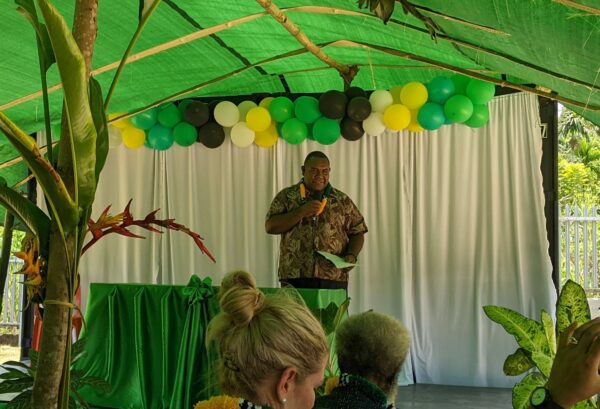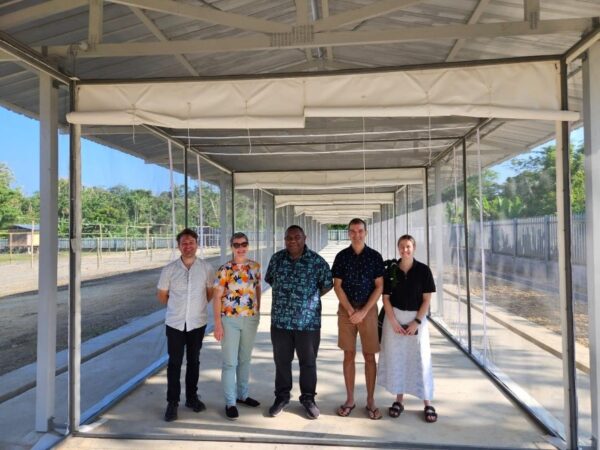New entomological facility opened by Papua New Guinea Institute of Medical Research (PNGIMR)

On 28th March, Papua New Guinea Institute of Medical Research (PNGIMR) officially opened the Belna Natnat Haus, a new entomological facility in Madang province on the north coast of the country.
Named after its location in Belna and the tok pisin word ‘natnat’ for mosquito, the construction of the laboratory was a key part of a partnership between IVCC, PNGIMR, National Department of Health (NDoH), Madang Provincial Health Authority, Burnet Institute, James Cook University (JCU) and Rotarians Against Malaria (RAM).
The NATNAT programme (Newly Adapted Tools Network Against vector-borne disease Transmission) has been funded by IVCC since 2019 through funds from Australia’s Department for Foreign Affairs and Trade (DFAT).
NATNAT is led by PNGIMR, Burnet Institute and James Cook University to build the capacity in Papua New Guinea (PNG) for the rapid evaluation and adoption of new vector control tools and comprises capacity building both of facilities and skills, a range of laboratory, semi-field and field evaluations of new tools and liaison with stakeholders on the scale up of those tools shown to be effective.
The newly developed site consists of a laboratory, insectary, and a semi-field tunnel system with an experimental hut system to be completed later in 2023.
The laboratory has been operational since 2022, with staff and fixtures moving over from the old PNGIMR site in Yagaum, but the official opening was held this week and welcomed delegates from PNG NDoH, DFAT, RAM, IVCC, the local community and a range of other national stakeholders.
The Belna Natnat Haus will be an important part of the fight against vector-borne disease in a country where malaria rates are increasing and where the most commonly deployed tool (LLINs) are not sufficient on their own to combat local vector species with early, outdoor biting behaviours.
It is hoped the facility will also have a regional impact beyond PNG and plans are already underway on future development work to maximise the capability and impact of the site.
Dr Moses Laman, deputy director of the institute and project Principal Investigator said, “This facility provides a great opportunity for PNG and the Pacific region to be able to generate data that will enable NMCPs to make informed decisions, build capacity and create a conducive research environment now and into the future.”

Team in front of experimental tunnel system. Paul Daly (Burnet Institute), Leanne Robinson (Burnet Institute), Moses Laman (PNGIMR), Stephan Karl (PNGIMR/James Cook University), Rachel Farquahr (Burnet Institute).
Credit: Fred Yeomans (IVCC)
Featured image: Moses Laman, PNGIMR
Credit: Evelien Rosens (Burnet Institute)



